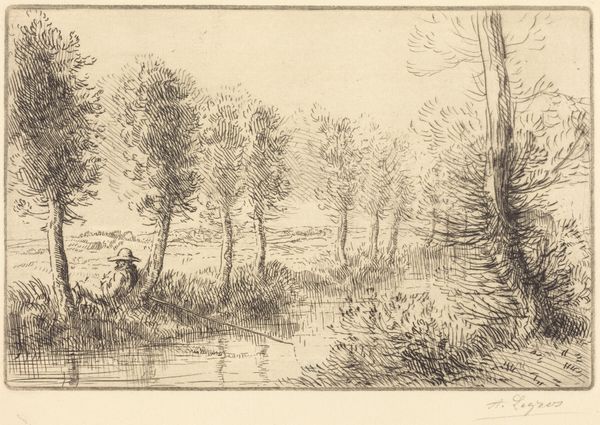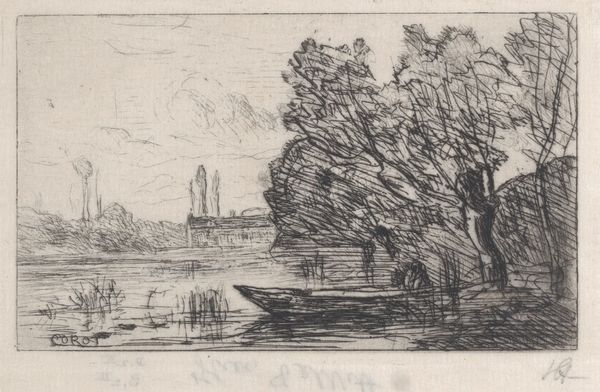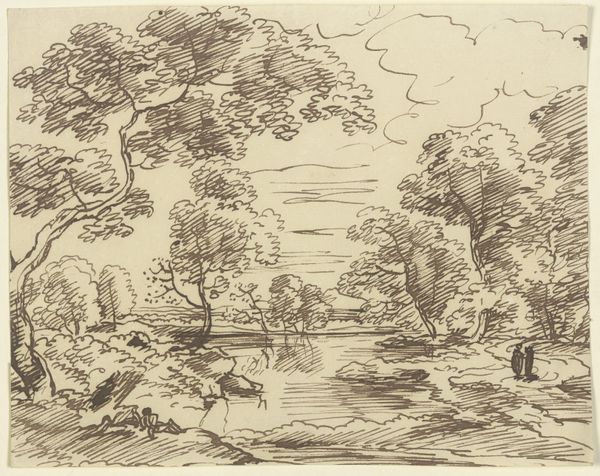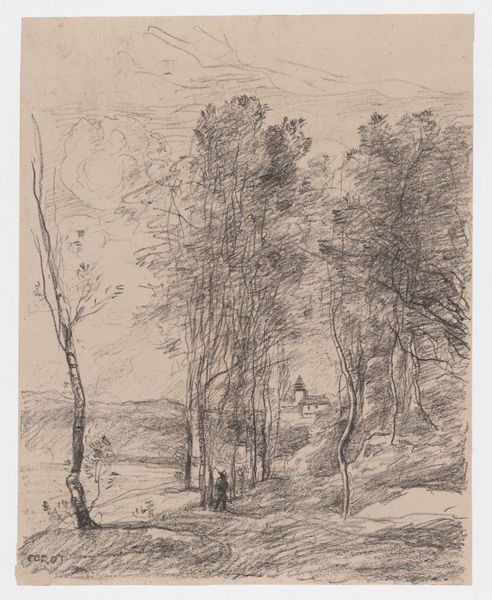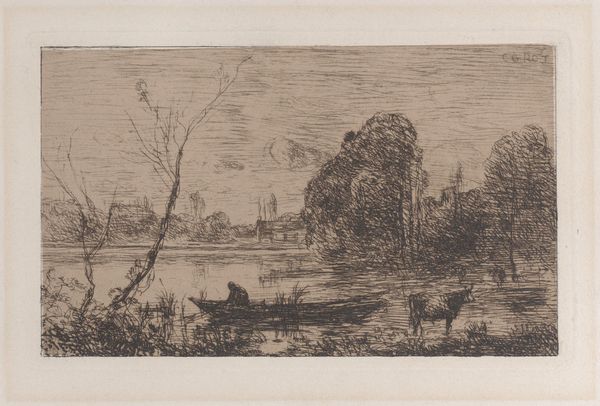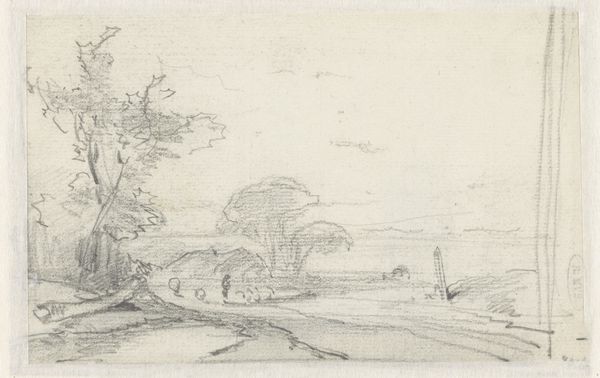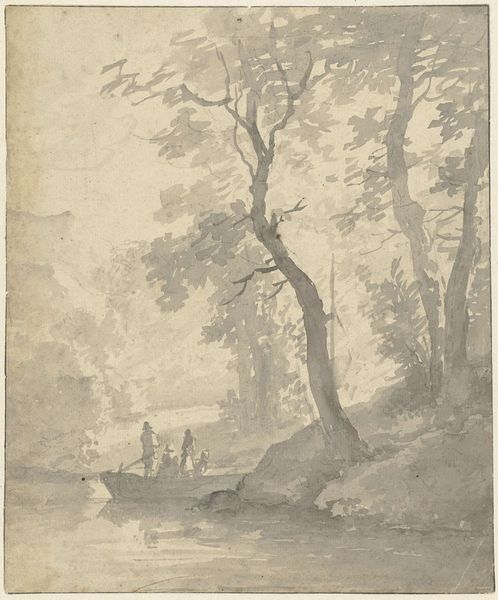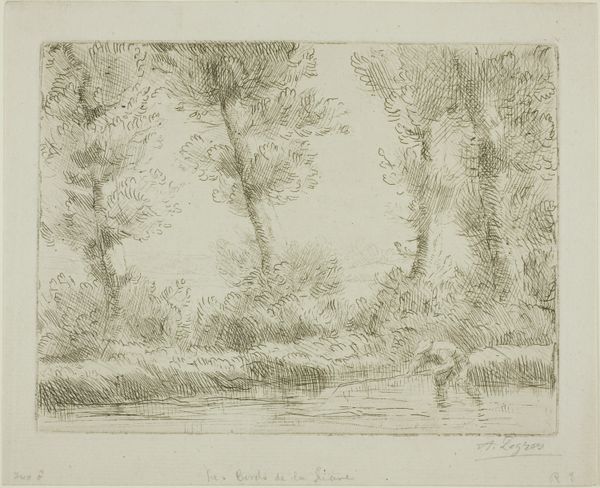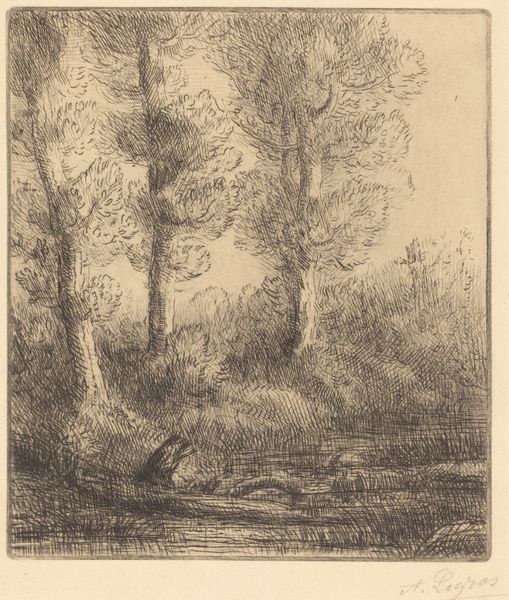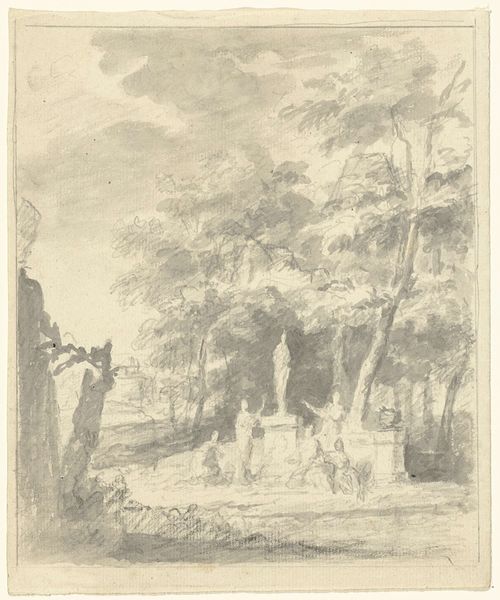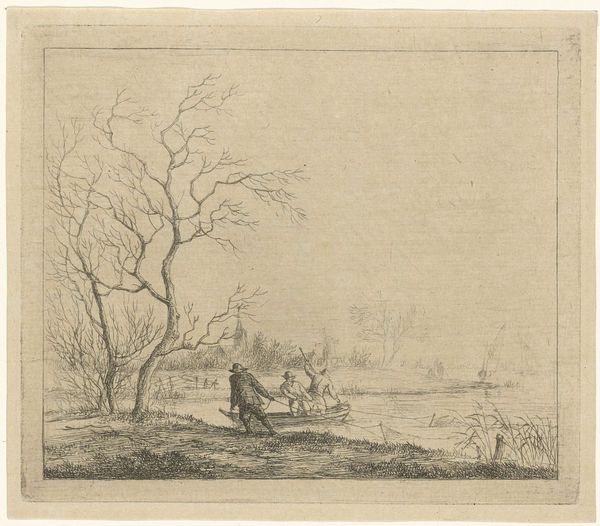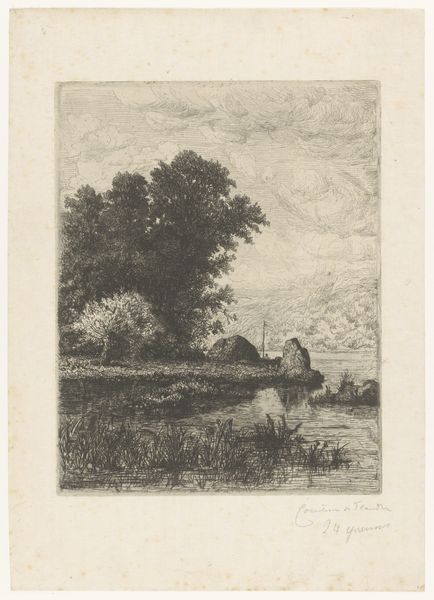
Dimensions: support: 181 x 158 mm
Copyright: CC-BY-NC-ND 4.0 DEED, Photo: Tate
Curator: Richard Wilson's pencil drawing, "Castle, Trees and Flood," captures a somber atmosphere, doesn't it? The tonality emphasizes the tranquil yet ominous mood. Editor: Indeed. The evident layering of graphite—look at how it builds depth—speaks volumes about the labor invested in a seemingly simple sketch. What might a close look at the social conditions reveal? Curator: Well, observe how Wilson uses light and shadow to create a sense of depth and space. The composition, with its receding planes and carefully placed figures, evokes a classical sensibility. Editor: Classical, yes, but also reflective of land enclosure and the rise of picturesque aesthetics for landowning patrons. The workers in the drawing, are they admiring the view or facing the consequences of labor? Curator: Perhaps both. The figures add a sense of scale and human presence to the landscape, inviting us to contemplate our relationship with nature. Editor: And perhaps our relationship to power and production. Considering the materiality of graphite—a mineral mined and processed—and paper—a commodity—offers another layer of interpretation. Curator: A compelling point. It seems Wilson's drawing offers a nuanced and layered reading of landscape and society. Editor: Precisely. Examining the means of its making and its socio-economic context, we gain greater appreciation for its complexities.
